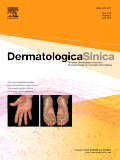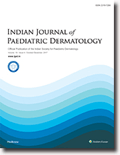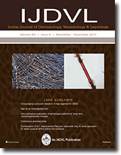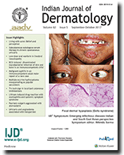
ANAIS BRASILEIROS DE DERMATOLOGIA
Scope & Guideline
Pioneering Open Access to Dermatological Discoveries.
Introduction
Aims and Scopes
- Clinical Dermatology:
Focuses on a wide array of skin disorders, including autoimmune diseases, infections, and neoplasms, providing insights into clinical features, diagnosis, and treatment. - Epidemiology and Public Health:
Presents studies that analyze the prevalence, risk factors, and clinical profiles of dermatological conditions within diverse populations, particularly in Brazil. - Innovative Therapies and Treatment Protocols:
Explores new therapeutic approaches, including the use of biologics and immunotherapy, in the management of chronic skin diseases like psoriasis and pemphigus. - Dermatopathology and Histopathology:
Includes research on the histological features of skin diseases, enhancing the understanding of disease mechanisms and aiding in accurate diagnosis. - Cutaneous Manifestations of Systemic Diseases:
Investigates how systemic diseases manifest on the skin, offering critical insights for dermatologists in recognizing and managing these conditions. - Patient-Centered Care and Quality of Life:
Addresses the psychosocial aspects of dermatological diseases, emphasizing the impact on patients' quality of life and the importance of comprehensive care.
Trending and Emerging
- Impact of COVID-19 on Dermatology:
A surge in studies examining the effects of COVID-19 on skin health, including vaccine-related dermatoses and the impact of the pandemic on dermatological care. - Biologics and Targeted Therapies:
An increasing number of publications focusing on the efficacy and safety of biologic therapies for chronic skin conditions, such as psoriasis and atopic dermatitis. - Dermatological Implications of Systemic Diseases:
Growing research on how systemic diseases, including autoimmune and infectious diseases, manifest dermatologically, promoting a more integrated approach to patient care. - Teledermatology and Digital Health:
Emerging interest in teledermatology, particularly in the context of the pandemic, emphasizing its role in improving access to dermatological care. - Personalized Medicine in Dermatology:
Trend towards personalized treatment approaches based on genetic, environmental, and psychosocial factors affecting skin diseases. - Dermoscopy and Non-Invasive Diagnostic Techniques:
Increased focus on non-invasive diagnostic methods such as dermoscopy, enhancing diagnostic accuracy and management of skin lesions.
Declining or Waning
- Traditional Dermatology Practices:
There is a noticeable decrease in publications centered around conventional dermatological practices, as newer therapeutic modalities and technologies gain prominence. - Single-Center Studies:
The frequency of single-center studies is declining, giving way to multi-center collaborations that enhance the generalizability of research findings. - Non-Autoimmune Skin Conditions:
Conditions such as dermatitis and benign skin lesions are receiving less attention compared to autoimmune and systemic diseases, indicating a shift towards more complex dermatological issues. - Historical Perspectives:
Fewer studies are being published that focus on the historical aspects of dermatology, as the emphasis moves towards current and future trends in research and treatment. - Case Reports on Rare Conditions:
While case reports remain relevant, there is a waning interest in rare dermatological conditions, as the journal increasingly prioritizes broader epidemiological studies and treatment outcomes.
Similar Journals

Dermatologica Sinica
Exploring the Frontiers of Dermatology TogetherDermatologica Sinica, published by Wolters Kluwer Medknow Publications, is an esteemed open-access journal in the field of dermatology that has been disseminating critical research since its inception in 2005. With an E-ISSN of 2223-330X and an ISSN of 1027-8117, this journal presents a platform for researchers, clinicians, and students to share cutting-edge findings and advancements in dermatological science. As of 2023, it proudly ranks in the Q2 category of dermatology journals and holds a notable position at rank #62 out of 142 in the Scopus Medicine - Dermatology category, placing it in the 56th percentile for impact. The journal transitioned to an open-access model in 2016, enhancing accessibility and visibility for groundbreaking studies worldwide. With a commitment to fostering innovation in the dermatological community, Dermatologica Sinica aims to advance the understanding and treatment of skin diseases while encouraging scholarly dialogue among practitioners and researchers across the globe.

Indian Journal of Paediatric Dermatology
Transforming insights into practice for young patients.Indian Journal of Paediatric Dermatology (ISSN: 2319-7250; E-ISSN: 2319-7269), published by Wolters Kluwer Medknow Publications, stands as a pivotal resource in the specialized field of paediatric dermatology. As a peer-reviewed open access journal since 2013, it aims to disseminate cutting-edge research, clinical practices, and innovative developments that cater to the specific dermatological needs of children. The journal provides an essential forum for collaboration among researchers, clinicians, and students, facilitating the sharing of knowledge on a wide array of topics, including skin conditions unique to paediatric populations, treatment methodologies, and advancements in dermatological care. With a commitment to enhancing the understanding and treatment of paediatric skin diseases, this journal plays a critical role in shaping best practices and informing future research directions in a rapidly evolving field.

CLINICAL AND EXPERIMENTAL DERMATOLOGY
Empowering Researchers and Clinicians in Dermatological Advancements.CLINICAL AND EXPERIMENTAL DERMATOLOGY is a prominent journal in the field of dermatology, published by Oxford University Press. With an ISSN of 0307-6938 and an E-ISSN of 1365-2230, this journal has been a vital resource for researchers and practitioners since its inception in 1976. Recognized as a Q2 journal within the category of dermatology for 2023, it holds a respectable position, ranking #54 among 142 journals in this discipline, placing it in the 62nd percentile on Scopus. The journal is dedicated to publishing high-quality research that spans clinical and experimental aspects of dermatological science, making it an essential source of knowledge for advancing understanding and treatment of skin disorders. Although it operates on a traditional subscription model without open access options, its contributions to the field are significant, influencing both clinical practices and academic research. Researchers, clinicians, and students alike will find vital insights and contemporary themes presented in its pages, supporting ongoing education and innovation in dermatology.

BRITISH JOURNAL OF DERMATOLOGY
Leading the way in dermatology innovation.The British Journal of Dermatology, published by Oxford University Press, stands as a premier platform for advancing the field of dermatological research and clinical practice since its inception in 1892. With a strong commitment to disseminating high-quality research, this esteemed journal is currently ranked in the Q1 category for both Dermatology and Miscellaneous Medicine in 2023, reflecting its influential position in the academic landscape. As the leading journal in its field, it enjoys a robust Scopus ranking of #1 out of 142 in dermatology, placing it in the 99th percentile globally. The journal covers a wide scope of subjects pertinent to dermatology, including clinical trials, treatment innovations, and epidemiological studies, making it an essential resource for researchers, healthcare professionals, and students alike. Although it is not an open-access publication, it ensures a broad reach through institutional subscriptions, fostering knowledge exchange across the global dermatological community. Based in the heart of the United Kingdom, the British Journal of Dermatology continues to play a crucial role in shaping the future of skin health and disease management.

Indian Journal of Dermatology Venereology & Leprology
Championing Academic Excellence in Dermatology and BeyondThe Indian Journal of Dermatology Venereology & Leprology (IJDL) is a premier open-access journal dedicated to the fields of dermatology, venereology, and leprology, published by SCIENTIFIC SCHOLAR LLC since 2004. With a rich historical background dating back to 1976, the journal has established itself as a reputable source for high-quality research and clinical advancements in these disciplines. The IJDL is recognized for its academic rigor, boasting a 2023 category quartile ranking of Q2 in Dermatology and Q3 in Infectious Diseases, indicating its significant contribution to these fields. With an accessible online platform, researchers, practitioners, and students alike can readily explore the latest studies, case reports, and reviews that address key issues affecting public health, particularly in India and beyond. The journal serves not only as a repository of valuable knowledge but also as a vital forum for the exchange of ideas, fostering collaboration and innovation among professionals dedicated to enhancing skin health and combating infectious diseases.

ARCHIVES OF DERMATOLOGICAL RESEARCH
Unveiling Innovations in Dermatological ResearchArchives of Dermatological Research is a premier journal dedicated to the rapidly evolving field of dermatology, published by Springer. With a distinguished history dating back to 1971 and indexed in the top quartiles (Q1 in Dermatology and Q2 in Medicine, 2023), this journal serves as a vital resource for researchers, clinicians, and students alike. It publishes innovative findings, critical reviews, and comprehensive studies that advance our understanding of dermatological conditions and treatments. The journal's commitment to disseminating high-quality research in a field crucial to public health emphasizes the importance of advancing knowledge in skin science and therapy. For those looking to explore significant advancements in dermatology, Archives of Dermatological Research offers an invaluable platform for scholarly discourse and knowledge exchange, though it is not an Open Access journal. Based in Germany, this publication attracts a global audience and remains at the forefront of dermatological research until its anticipated converged years reaching 2024.

INDIAN JOURNAL OF DERMATOLOGY
Exploring innovations in dermatology for a healthier tomorrow.INDIAN JOURNAL OF DERMATOLOGY, published by Wolters Kluwer Medknow Publications, is a renowned open-access journal that has been a significant platform for disseminating vital research in the field of dermatology since its inception in 1962. With an ISSN of 0019-5154 and an E-ISSN of 1998-3611, the journal covers a comprehensive array of topics relevant to skin health and diseases, serving both academic and clinical audiences in India and beyond. Having transitioned to an open access model in 2005, it strives to enhance the reach and impact of dermatological research. The journal is classified in the Q3 quartile within the dermatology category as of 2023 and ranks 82 out of 142 in Scopus, showcasing its contribution to the field despite competitive rankings. By fostering scholarly communication and providing a rigorous peer-review process, the INDIAN JOURNAL OF DERMATOLOGY remains a vital resource for researchers, practitioners, and students devoted to advancing the understanding and treatment of skin disorders.

Annals of Dermatology
Connecting researchers and clinicians for skin health advancements.Annals of Dermatology is a prestigious academic journal published by the Korean Dermatological Association, focusing on the latest research and advancements in the field of dermatology. With a commitment to advancing knowledge in skin health and disease, this journal serves as a vital resource for researchers, clinicians, and students working in dermatology and related disciplines. Since its inception in 1989, it has evolved to consolidate its position in the academic community, boasting a Q2 ranking in the 2023 Dermatology category and a Scopus rank of #87 out of 142, placing it in the 39th percentile. Although it operates under a subscription model, the journal's impact factor reflects its significance in advancing dermatological research, attracting innovative studies and reviews that shape clinical practice. With a publication history extending from 1989 to 1996 and then from 2008 to the present, Annals of Dermatology continues to be an essential publication for those devoted to improving skin health.

JOURNAL OF THE AMERICAN ACADEMY OF DERMATOLOGY
Transforming skin health with every published study.JOURNAL OF THE AMERICAN ACADEMY OF DERMATOLOGY, published by Mosby-Elsevier, stands at the forefront of dermatological research and education. With an impressive impact factor and categorized as Q1 in Dermatology, this journal has established itself as a pivotal resource for healthcare professionals and researchers in the field. Since its inception in 1979, it has provided a platform for high-quality peer-reviewed articles, contributing significantly to advancements in dermatological science and practice through 2024. The journal commands an honorable position, ranking #8 out of 142 in the Scopus database's medicine dermatology category, placing it in the 94th percentile among its peers. Readers can access a wealth of cutting-edge studies, case reports, and reviews that address a broad spectrum of topics, from clinical dermatology to emerging therapies. In addition, the journal's commitment to excellence ensures it remains an essential tool for students, clinicians, and researchers dedicated to improving skin health and furthering knowledge in dermatology.

DERMATOLOGIC CLINICS
Elevating Standards in Dermatologic Education and PracticeDERMATOLOGIC CLINICS is a leading journal in the field of dermatology, published by W B SAUNDERS CO-ELSEVIER INC. Since its inception in 1983, the journal has consistently provided a platform for the dissemination of high-quality research and clinical insights, earning its place in the prestigious Q1 quartile for dermatology in 2023. With a Scopus ranking of #34 out of 142 in its category and a commendable 76th percentile, DERMATOLOGIC CLINICS remains essential reading for clinicians, researchers, and students alike. The journal features comprehensive reviews and original articles that address the latest advancements and challenges in dermatologic diagnostics and treatments. Though it does not offer Open Access, it is widely accessible ensuring a broad readership. With a commitment to advancing the understanding of skin disorders, DERMATOLOGIC CLINICS continues to uphold its legacy of excellence in dermatological scholarship.